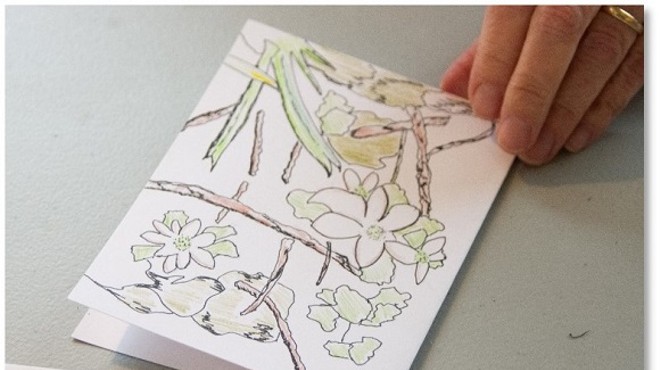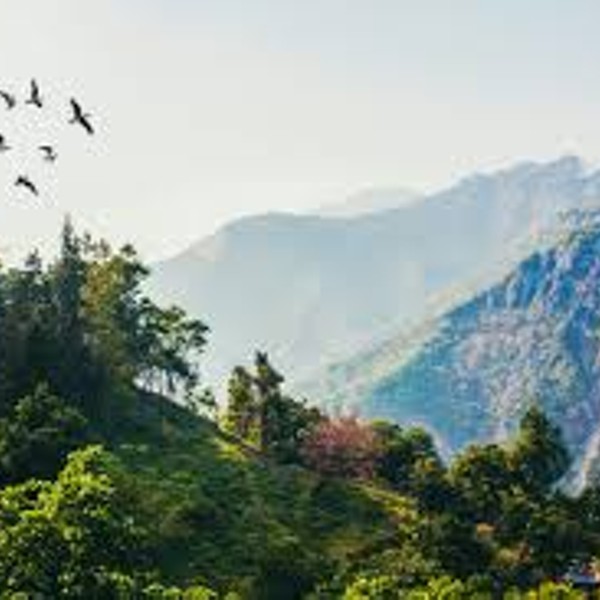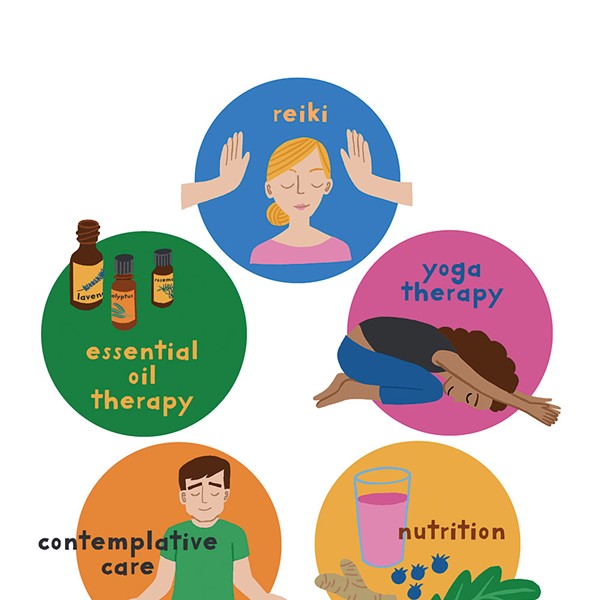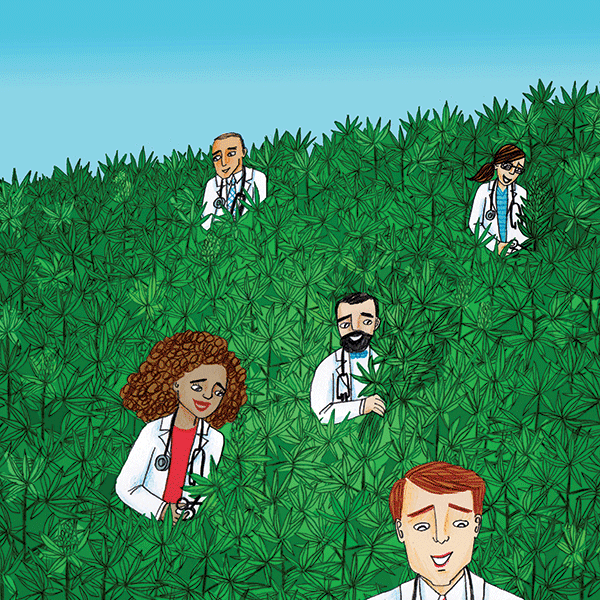It's a slow start, but eventually Heartney hits pay dirt with a beautiful beard mushroom that looks like undersea coral. "These are fabulous to eat—a little bit of oil, a little bit of Earth Balance, and you are living the good life," says Litt. Gradually, Heartney's bag fills up with beards, puffballs, and wine-cap stropharia. Along the way, Litt and Heartney point out the poisonous mushrooms—round, harmless looking toadstools that split open to reveal an ominously black interior. Even experts can make mistakes, and the couple has their own foraging war story that landed Heartney in the ER—a puffball error they'll never make again. Mostly they credit their good health to mushrooms and veganism. ("I can't afford to eat meat, because then I'll get cancer or diabetes or heart disease," says Litt. "Every so often I'll have a fish. Fish are seaweed with eyes.")
Just when the foraging excitement is starting to flag, we round the bend to an unexpected sight. "DON'T MOVE!" booms Litt. Suspecting a snake, I do exactly the opposite and start hopping around like the ground is on fire. But what he spots is a small patch of harmless, sunset-yellow mushrooms. "The last chanterelles of summer!" he croons. To this Shroomdog, it's Christmas morning.
My, Oh My, Mycelium Fungi are intriguing, and to many tastes delicious, but the real medicinal powerhouse beneath them lives inside the earth. "Mushrooms are the fruit of the underground network called mycelium," says Stamets, who has devoted much of his career to the study of this natural phenomenon. While mushrooms can come up and produce in four or five days, the mycelium from which they arise can be there for decades or hundreds of years. Stamets credits its survival to a potent immune system that allows it to thrive and sometimes grow to thousands of acres in size. The largest organism on Earth is the mycelial mat in eastern Oregon—2,200 acres and more than 2,000 years old. "It's made up of these threads, about 8 miles of them per cubic inch," he says. "We have five or six skin cell walls that protect us from infection; the mycelial mat has just one. It's surrounded by hundreds of millions of hungry microbes that try to consume it, yet it keeps them at bay. This speaks to the concept of host defense; the organism can stave off competitors to live this long and grand life." Could mycelium be the Earth's own expression of health and wellness?
"We are an ecosystem, we live in an ecosystem, and we are born from an ecosystem. I see it as a continuum—the environment to our own individual health," says Stamets, who writes passionately about environmental remediation in his book Mycelium Running: How Mushrooms Can Help Save the World. Powerful absorbers of toxins, mushrooms may well be nature's vacuum cleaners; they also break down plant tissue to create the soil that gives us life. "The complexity of the species literally under our feet as we walk is critical for human survival. The loss of biodiversity, the loss of soil, the loss of humus, overpopulation, deforestation—this is really unraveling the very fabric of nature that is essential for us to survive." The old-growth forest is one habitat that Stamets is eager to protect. It's here, in the Pacific Northwest, that the uniquely potent agarikon mushroom grows. Stamets's newest patent centers around the antiviral properties of this enormous and extremely rare mushroom. "We had the mycelium of agarikon, the longest living mushroom in the world and growing exclusively in old-growth forests, tested against avian flu viruses and got astonishing results," he says. "From the mycelium, we're finding a whole new repertoire of active constituents that interface and potentiate modern medicine in unexpected ways."

















